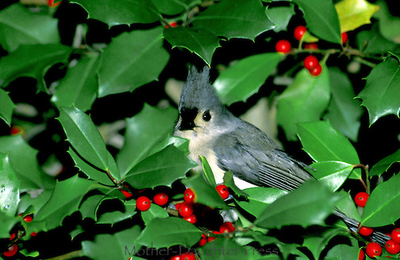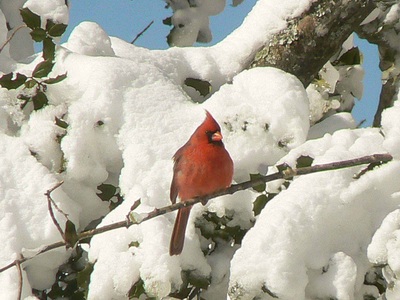Landscape Designers, Pasadena, MD
Want to bring the birds in year round?
Backyard Wild Birds - Wild Bird feeders can be Squirrel proof bird feeders with the right Bird feeder poles, bird feeder squirrel baffles and bird feeders. Learn how to squirrel proof bird feeders and how to attract wild birds to your backyard.
To provide a home and food for many kinds of birds year round, include plants from these seven important groups:
Evergreens: Spruce, Pine, Junipers, Firs and Arbor Vitae provide birds of many types an excellent shelter, nest sites, and source of food. For instance, some northern finches specifically extract seeds from conifer cones, and some hummingbirds eat insects and sap from the tips of these branches once they return to your landscaping each spring.
Wild grasses and forbs: Wild grasses that are left over for the winter provide cover for ground-nesting birds. Their abundant seeds provide plenty of food for many varieties of birds.
Nectar producers: Candy Tuft, Aster and Butterfly Weed attract many insects which serve as food for many birds. Some flowers, especially those with tubular red or orange blossoms, like Angel's Trumpet, attract hummingbirds and orioles.
Summer fruits: Chokecherry, Cherry, Raspberry, Native Honeysuckle, Serviceberry, Blueberry, Blackberry, Elderberry and Native Mulberry provide food for birds throughout the breeding season.
Autumn fruits: Mountain Ash, Dogwood, Buffalo Berries, Cotoneaster, and other fall bearing fruit and berry plants supply food for migratory birds- both to help build up fat reserves before the long migration and to sustain them throughout their journey. Non-migratory birds take advantage of these plants also in order to fatten up so they enter the winter season in tip top physical condition.
Winter fruits: Plants that hold their fruits after they ripen in the fall provide an important winter food source for residents who stay in your yard year round and early-returning migrants. Pine Grosbeaks, Wax Wings, Robins,and Mockingbirds are among the birds who benefit from fruit trees in winter. These include Snowberry, Sumac, Crabapple, Viburnums, Virginia Creeper, Eastern Wahoo and Holly (Winterberry) all provide essential nutrition for these birds.
Nuts and acorns: Hickory, Buckeye, Walnut, Oak, Butternut, Beech, and Hazelnut trees all provide food for Blue Jays, Titmice, Woodpeckers and others. The insects drawn to these blossoms provide essential food for spring-migrating birds. These types of trees also provide excellent nesting habitat for many species.
Wild grasses and forbs: Wild grasses that are left over for the winter provide cover for ground-nesting birds. Their abundant seeds provide plenty of food for many varieties of birds.
Nectar producers: Candy Tuft, Aster and Butterfly Weed attract many insects which serve as food for many birds. Some flowers, especially those with tubular red or orange blossoms, like Angel's Trumpet, attract hummingbirds and orioles.
Summer fruits: Chokecherry, Cherry, Raspberry, Native Honeysuckle, Serviceberry, Blueberry, Blackberry, Elderberry and Native Mulberry provide food for birds throughout the breeding season.
Autumn fruits: Mountain Ash, Dogwood, Buffalo Berries, Cotoneaster, and other fall bearing fruit and berry plants supply food for migratory birds- both to help build up fat reserves before the long migration and to sustain them throughout their journey. Non-migratory birds take advantage of these plants also in order to fatten up so they enter the winter season in tip top physical condition.
Winter fruits: Plants that hold their fruits after they ripen in the fall provide an important winter food source for residents who stay in your yard year round and early-returning migrants. Pine Grosbeaks, Wax Wings, Robins,and Mockingbirds are among the birds who benefit from fruit trees in winter. These include Snowberry, Sumac, Crabapple, Viburnums, Virginia Creeper, Eastern Wahoo and Holly (Winterberry) all provide essential nutrition for these birds.
Nuts and acorns: Hickory, Buckeye, Walnut, Oak, Butternut, Beech, and Hazelnut trees all provide food for Blue Jays, Titmice, Woodpeckers and others. The insects drawn to these blossoms provide essential food for spring-migrating birds. These types of trees also provide excellent nesting habitat for many species.





